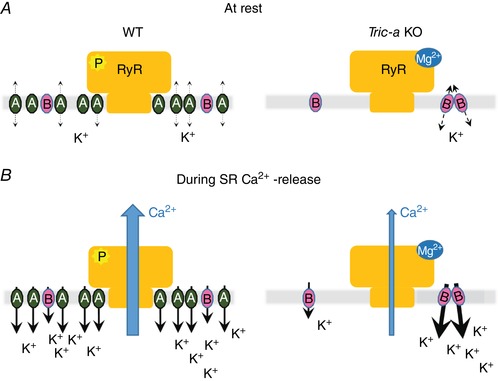Figure 9. Model of the role of TRIC‐A and TRIC‐B in WT and Tric‐a KO skeletal muscle.

An approximate ratio of five TRIC‐A to one TRIC‐B: one RyR1 is assumed (Pitt et al. 2010; Zhao et al. 2010). A, at rest: in WT SR, when the membrane potential across SR is 0 mV, the Po of TRIC channels, particularly TRIC‐B, is low but sufficient to equilibrate K+ across the SR. In Tric‐a KO SR, where TRIC‐B channels can couple together, they pass more current than isolated channels. B, during SR Ca2+ release: in WT SR, TRIC channels open more if the SR becomes more negative. In Tric‐a KO, there are fewer SR K+‐channels that may not pass sufficient K+ current even though clustered TRIC‐B channels may also gate with high Po in vivo. RyR1 Po is already lower in Tric‐a KO (El‐Ajouz et al. 2017) as a result of increased inhibition by Mg2+ and the inability of phosphorylation to stimulate RyR1 opening. If there is insufficient counterion current, RyR Po will be limited even more as the reversal potential of Ca2+ is reached. [Color figure can be viewed at wileyonlinelibrary.com]
